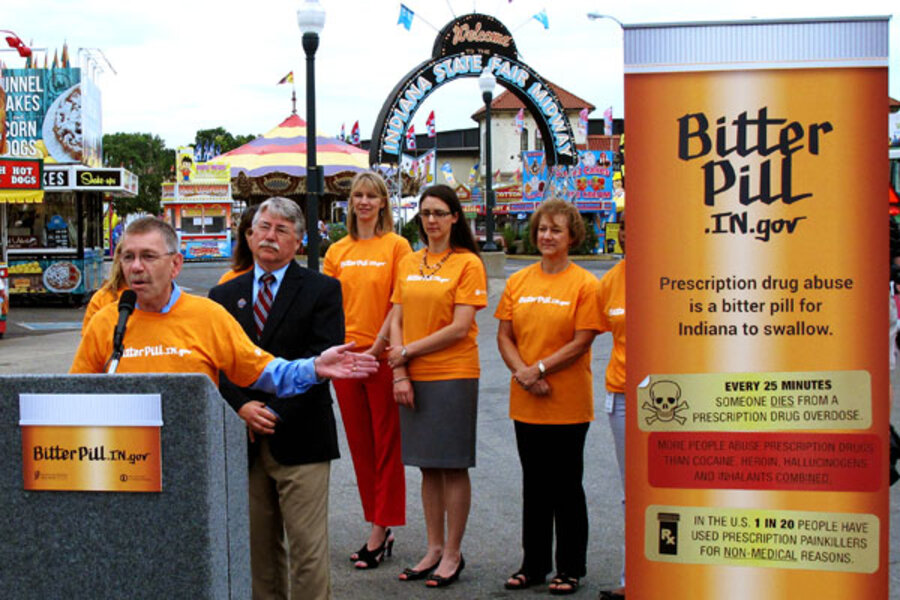Prescription drug abuse now more deadly than heroin, cocaine combined
Loading...
| Chicago
More people are dying in the United States from prescription drugs than from heroin and cocaine combined, a new study says, signaling that pill abuse is not just the leading cause of drug overdose deaths, but that it also requires more oversight and training by both doctors and state health agencies.
Deaths involving prescription pills have quadrupled between 1999 and 2010, according to a report released Monday by Trust for America’s Health, a nonprofit organization in Washington that studies health policy. About 6.1 million people abuse prescription pills, and overdose deaths have at least doubled in 29 states, where they now exceed vehicle-related deaths. In 10 of those states, rates tripled; in four of them, they quadrupled.
“We’ve been struck how quickly this probably has emerged … it warrants a strong public health response,” says Andrea Gielen, director of the Johns Hopkins Center for Injury Research and Policy in Baltimore, who served as a consultant for the report. “We’re concerned about preventing misuse or overdoses, which are very real and heart-wrenching problems that have been skyrocketing recently.”
Prescription drug overdose rates are highest in the poorest regions of the US: Appalachia and the Southwest. West Virginia has the highest rate, at 28.9 deaths per every 100,000 people – a 605 percent increase since 1999. Following close behind are New Mexico, Kentucky, Nevada, and Oklahoma.
Rates are lowest in the Midwest. North Dakota has the lowest rate of prescription drug overdose deaths, at 3.4 per every 100,000 people.
The most common misused prescription drugs are painkillers (such as OxyContin, Percocet, and Vicodin), depressants such as sedatives, and stimulants used to treat narcolepsy and attention deficit hyperactivity disorder (ADHD). While men ages 25 to 54 are most likely to abuse these drugs, rates among female abusers are accelerating. Since 1999, overdose deaths have increased 400 percent among women compared with 265 percent among men.
Monitoring programs for prescription drugs are in place in every state, but the strategies are often broad, often fail to act in concert with one another, or vary in funding and capability, the report says.
State providers often don’t have access to Prescription Drug Monitoring Programs, which are electronic databases used to track prescriptions by patients and can flag misuse by tracking multiple prescriptions by different doctors – a practice also known as “doctor shopping,” says Jeffrey Levy, executive director of Trust for America’s Health.
Moreover, states are not yet fully utilizing PDMPs and vary in requirements for reporting and determining who can access and report data, Mr. Levy adds. Forty-nine states have a PMDP, but only 16 require health-care providers to use it. (Missouri is the only state without a PDMP.)
For the program to work in preventing overdose deaths, he adds, it “needs to be modernized and integrated with public health systems. If we don’t integrate [it], we will lose a huge opportunity.”
Besides expanding access to PDMPs, the report urges training for doctors and others on prescription drug abuse, and for an expansion of private and public insurance programs to cover the full range of substance-abuse treatment.
Levy says that the misuse and abuse of prescription drugs costs the US an estimated $53.4 billion each year in medical and criminal justice costs and lost productivity.








